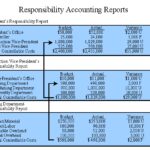
This sounds like a good idea in theory, and it even works when you are a small solopreneur. You’ll find that there are not enough hours in the day, or days in the week, to get all your work done. Now you can select an Undeposited Funds or another account each time you create a sales receipt. Otherwise, you run the risk of either understating or overstating your income, both of which will have tax implications. Let’s say your customer sent you a check for services rendered.

If you follow the technical financial accounting you will see the end result is that Income or Sales has been credited and Cash or Checking has been debited. Both accounts receivable and undeposited funds accounts were used but came out with a $0.00 balance in the end. If this process is not handled correctly you run the risk of overstating income.
You have to think of receiving payments in QuickBooks as you sitting at the office recording your various customer payments against an invoice or invoices. This is where the undeposited funds account comes into play. When you receive a payment against a customer invoice general ledger nebraska you are increasing undeposited funds. The udeposited funds account exists because you have not told QuickBooks what bank account you would like to deposit the funds into. The technical accounting of this procedure is credit accounts receivable and debit undeposited funds. When it comes to keeping your finances straight, QuickBooks does a brilliant job of providing simple yet effective tools to see the flow of money in and out of your company.
Invoice payments you process outside of QuickBooks:
Since both transactions were dated on Jan. 29, the first thing to check for is a deposit in your Bank Register for $2,062.52 dated on or around Jan. 29. It’s possible the deposit was posted straight to an Income account rather than matched to payments received. Also check for two separate deposits for $1,675.52 and $387, respectively. Although you can record it as “deposited”, you’ll create a better representation of your records and accounts by getting into the habit of freelancers 2021 using the undeposited funds account found in QuickBooks. Another way to skip the tedious process is by accepting credit cards or another online payment option such as ACH.
- You have many accounting software options when it comes to keeping track of your business’s financial accounts.
- For many QuickBooks do-it-yourselfers, it’s possible to “get by” and decode the mysterious language of accounting-ese in the tool.
- This post will help you understand the purpose of an undeposited funds account, how to clear it, and how to avoid having payments automatically posted to this account.
- Once you have determined all deposits have been recorded properly, open the Bank Deposit screen again and review what is in the Undeposited Funds account.
- Otherwise, you run the risk of either understating or overstating your income, both of which will have tax implications.
You’re our first priority.Every time.
Since there is not a bank account that supports undeposited funds or accounts receivables, you need to reconcile these accounts to income received, instead of a bank statement. You must ensure that every valuable penny earned from your hard work has been collected, and nothing more. In the end, it is the reconciliation process that really brings clarity of revenue received to your business.
Learn How We Can Impact Your Business Growth
The information provided here is not investment, tax, or financial advice. You should consult with a licensed professional for advice concerning your specific situation. Your customer has given you a payment for goods purchased or services rendered. If your customer is paying an invoice you have entered into QuickBooks Online and sent to them, you will want to record the payment using the Receive Payments option. In order for your financial statements to be accurate for the year, you need to record the payment as being received on Dec. 31. However, the payment will not clear your bank until Jan. 2 of the next year, at the earliest.
Both the Undeposited Funds and Petty Cash accounts are used to record cash related transactions. However, the Petty Cash account is used exclusively to record daily expenses or income from business operations. If your bank records a single payment as its own deposit, you don’t need how businesses raise financial capital to combine it with others in QuickBooks.
If you apply client B’s payment to client A’s account, client B is going to have a fit. He already paid his bill and does not want to receive a past-due notice! The purpose of the undeposited funds account is to help you record which client paid against which invoice, especially when money is being deposited in bulk. When you have your deposit slip, make a bank deposit in QuickBooks to combine payments in Undeposited Funds to match.
